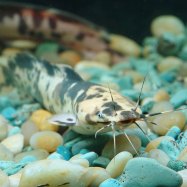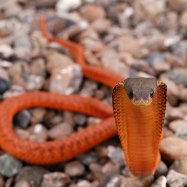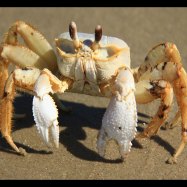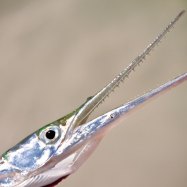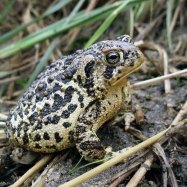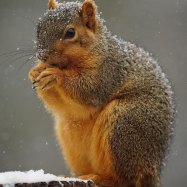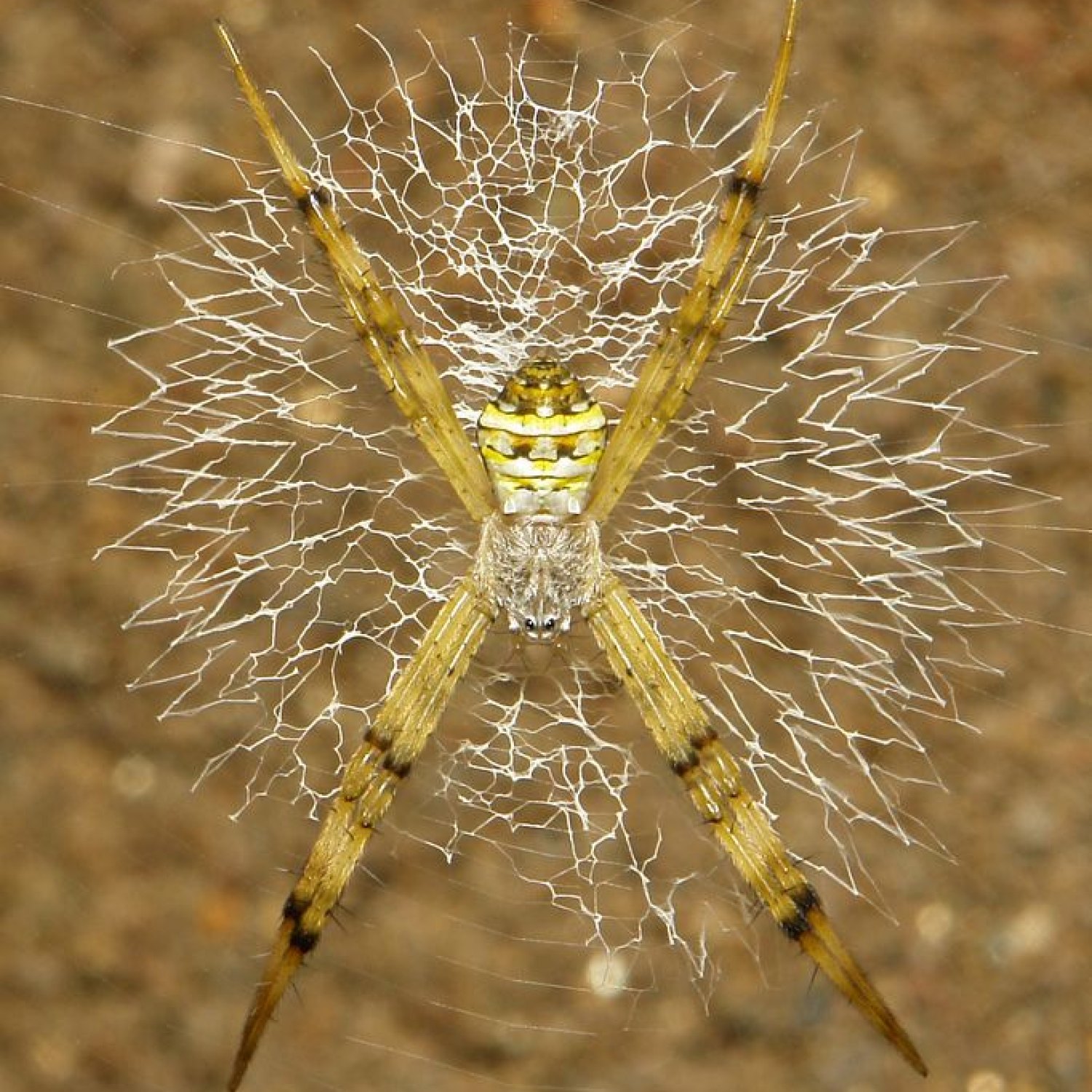
Writing Spider
Females: 0.75 to 1.25 inches, Males: 0.25 to 0.35 inches
Meet the writing spider, found in the southern and eastern parts of the US. With its large, round abdomen and long, slender legs, this arachnid creates intricate webs for catching prey. Females grow up to 1.25 inches while males are smaller, measuring only 0.25 to 0.35 inches. #WritingSpider #Arachnid #NatureFacts
Animal Details Summary:
Common Name: Golden Orb-Weaver Spider
Kingdom: Animalia
Habitat: Fields, forests, gardens, grasslands
The Majestic Writing Spider: Nature's Master Weaver
If you're walking through a field or garden and come across a strikingly large spider with a golden yellow or orange body, you've likely just encountered a Writing Spider. Scientifically known as Argiope aurantia, this species is also commonly referred to as the Golden Orb-Weaver Spider. As part of the Araneidae family, these spiders are well-known for their intricate webs and unique coloration. A truly remarkable creature, the Writing Spider is a master weaver and a great example of the beauty and complexity of nature Writing Spider.Discovering the Writing Spider
The Writing Spider can be found in fields, forests, gardens, and grasslands throughout North and Central America, with the United States being its country of origin. However, it is predominantly found in the southern and eastern parts of the United States. While it may seem intimidating to some, this spider is actually harmless to humans, making it a fascinating and safe creature to observe.The Beauty of Nature's Tapestry
One of the most notable features of the Writing Spider is its striking coloration. With a body that is golden yellow or orange, these spiders are easily identifiable and stand out among other spiders. Additionally, they have a large, round abdomen and long, slender legs, giving them a unique and graceful appearance. The females, which are larger than the males, can reach a length of 0.75 to 1.25 inches, while males only grow to be 0 West Highland Terrier.25 to 0.35 inches long.The Art of Weaving
One of the most remarkable abilities of the Writing Spider is its skill in weaving intricate and symmetrical webs. These spiders are considered to be some of the best weavers in the arachnid world. Their webs are typically vertical and can stretch up to three feet in diameter. The silk used to construct these webs is incredibly strong and sticky, making it a perfect trap for their prey.Interestingly, these spiders only have one kind of silk gland, which produces both sticky and non-sticky silk. They use the non-sticky silk to form the frame and foundation of their webs, and the more adhesive silk to create the spirals that capture their prey. Their webs are often adorned with zigzag patterns, known as stabilimenta, which have multiple possible functions, including reflecting UV light to attract insects or acting as camouflage for the spider.
A Carnivorous Diet
The Writing Spider is a carnivore, meaning that it feeds on other small insects. It preys primarily on flying insects, such as flies, mosquitoes, and moths, which get caught in their webs. Once caught, the spider quickly wraps its prey in silk and injects it with venom to immobilize it. Despite their intimidating size and appearance, these spiders do not pose a threat to humans and are an essential part of the ecosystem, controlling insect populations in their habitats.The Life Cycle of the Writing Spider
Like many other spiders, the Writing Spider goes through several stages in its life cycle. It starts as an egg sac, which the female spider creates and then attaches to her web. After hatching, the spiderlings stay with their mother until they are able to fend for themselves. Once they are old enough, the spiderlings disperse, and the females will eventually become the large, round-bodied Writing Spiders we are used to seeing.Interestingly, towards the end of summer and into early fall, female Writing Spiders begin to die off. However, they leave behind their webs, which are then taken over by males, who mature later in the season. These males can be distinguished by their smaller size and can often be seen hanging upside down on the edges of the female's web, waiting to breed with her. After the male has fulfilled his purpose, he will ultimately meet his demise, and the cycle continues.
A Keystone Species
While the Writing Spider may seem like just another spider to some, it actually plays a crucial role in its habitat. These spiders are considered to be a keystone species, meaning that they have a significant impact on their environment. Their presence in an ecosystem can affect the population of other organisms, which can, in turn, influence the entire ecosystem.Their important role as predators also helps maintain biological diversity by controlling insect populations in their habitats. Without them, the balance of their ecosystem could be severely disrupted.
Misconceptions and Conservation Efforts
Unfortunately, the Writing Spider, like many other spider species, is often misunderstood and subject to a lot of misconceptions. Many people fear them and consider them to be dangerous, when in reality, they pose no real threat to humans. In fact, they are beneficial to have around, as they help control insect populations.However, like many other species, Writing Spiders are still facing conservation challenges. The destruction of their natural habitats, such as forest and grassland areas, is impacting their populations, and they are also at risk from pesticide use. As we continue to develop and expand our cities and towns, we must remember to protect and preserve the natural habitats of all creatures, big and small.
The Writing Spider: An Amazing Creature of Nature
In conclusion, the Writing Spider, also known as the Golden Orb-Weaver, is a magnificent and fascinating creature that showcases the beauty and complexity of nature. With its striking coloration, impressive weaving skills, and important role in its ecosystem, this spider is truly a marvel to behold. By understanding and appreciating this species, we can work towards protecting and preserving its natural habitat and ensuring its continued presence in our ecosystems. So the next time you come across a Writing Spider, take a moment to observe and appreciate this amazing creature and its remarkable abilities.

Writing Spider
Animal Details Writing Spider - Scientific Name: Argiope aurantia
- Category: Animals W
- Scientific Name: Argiope aurantia
- Common Name: Golden Orb-Weaver Spider
- Kingdom: Animalia
- Phylum: Arthropoda
- Class: Arachnida
- Order: Araneae
- Family: Araneidae
- Habitat: Fields, forests, gardens, grasslands
- Feeding Method: Carnivore
- Geographical Distribution: North and Central America, including the United States
- Country of Origin: United States
- Location: Mostly found in the southern and eastern parts of the United States
- Animal Coloration: Golden yellow or orange
- Body Shape: Large, round abdomen with long, slender legs
- Length: Females: 0.75 to 1.25 inches, Males: 0.25 to 0.35 inches
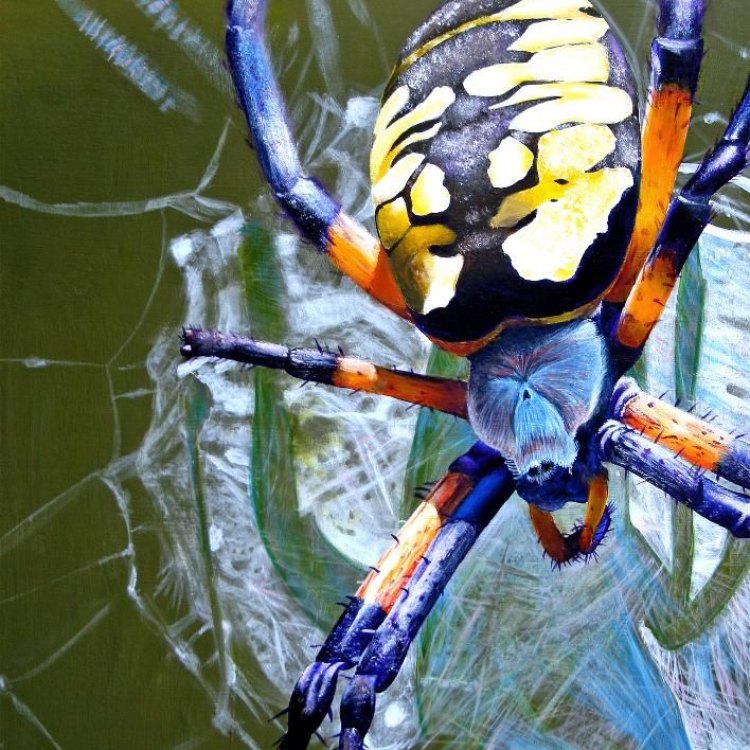
Golden Orb-Weaver Spider
- Adult Size: Females: 0.75 to 1.25 inches, Males: 0.25 to 0.35 inches
- Average Lifespan: 1 to 2 years
- Reproduction: Sexual
- Reproductive Behavior: Males build small webs near the female's web and then mate with her
- Sound or Call: Produces vibrations on its web to communicate with potential mates
- Migration Pattern: None
- Social Groups: Solitary
- Behavior: Builds large, orb-shaped webs to capture prey
- Threats: Predators such as birds and wasps
- Conservation Status: Not listed as endangered
- Impact on Ecosystem: Controls populations of insects
- Human Use: Not used by humans
- Distinctive Features: Golden-colored web, large round abdomen
- Interesting Facts: 1. The female's web can be as large as 2 feet in diameter. 2. The spider's silk is extremely strong and flexible. 3. The male spider is significantly smaller than the female and often becomes the female's meal after mating.
- Predator: Birds, wasps, and other spiders
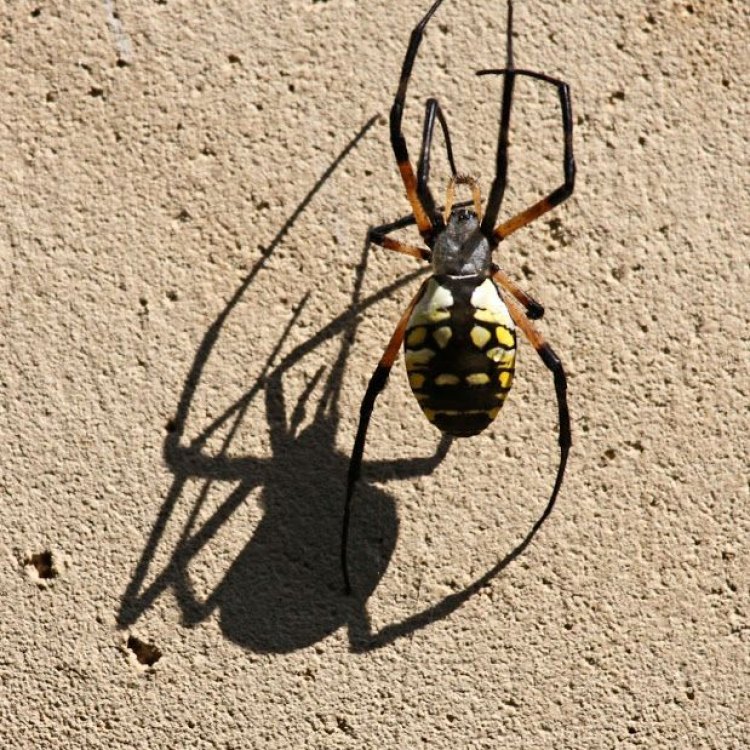
Argiope aurantia
An Intriguing Look at the Fascinating Writing Spider and its Unique Traits
In the world of spiders, there is one species that stands out for its distinctive features and interesting behaviors - the Writing Spider. Also known as the golden orb-weaver spider, these arachnids can be found in various regions around the world, including North and South America, Africa, and Asia. But what sets them apart from the rest? Let's take a closer look at this intriguing species and discover its many remarkable traits.Physical Characteristics and Behavior
The Writing Spider is not a large spider in terms of body length, with females averaging 0 PeaceOfAnimals.Com.75 to 1.25 inches and males measuring only 0.25 to 0.35 inches. However, their unique appearance is what makes them stand out. The females have a large, round abdomen that can range from a deep orange to a bright yellow color. This gives them a striking and eye-catching appearance, especially when paired with their long, spindly legs.
In terms of behavior, these spiders are solitary creatures, preferring to live and hunt alone. They are also diurnal, meaning they are most active during the daytime Walrus. But perhaps the most fascinating behavior of the Writing Spider is its ability to build large orb-shaped webs to capture prey. These webs can measure up to 2 feet in diameter, making them one of the largest webs in the spider kingdom. The silk used to construct the web is also incredibly strong and flexible, allowing it to withstand winds and catch larger prey.
Reproduction and Mating Rituals
As with most spiders, the Writing Spider's method of reproduction is sexual. When it comes to mating, the male approaches the female's web and signals his presence by plucking at the strands of the web. The female then either accepts or rejects the male, depending on her readiness to mate. If she accepts, the male will build a smaller web close to hers and mate with her. This can be a perilous process for the male, as the female has been known to devour him after the mating is complete. This occurrence has earned the male Writing Spider the nickname "sacrificial mate."
Sound Communication and Migration Patterns
Unlike many other spiders, the Writing Spider does not use chemical or visual signals to communicate with potential mates. Instead, they use vibrations on their webs to send messages. When a male plucks at the threads of a female's web, he creates vibrations that travel through the web and are received by the female. This method of communication is essential, especially if the female is situated far away from the male's web.
As for migration patterns, Writing Spiders do not engage in any regular migration. They are territorial and typically remain within a specific area. However, some individual spiders may move to a new location if resources in their current area become scarce.
Threats and Conservation Status
Writing Spiders have a variety of predators, including birds, wasps, and other spiders. However, these predators do not pose a significant threat to the overall population of these spiders. In fact, due to their solitary nature and proficient hunting skills, Writing Spiders are not considered an endangered species. They can also adapt to a range of habitats and are not affected by human activities, further contributing to their stable conservation status.
Impact on the Ecosystem
Despite their small size, Writing Spiders play a crucial role in their ecosystem. As voracious hunters, they maintain the population of insects in their habitat. With their large webs and strong silk, they can catch a wide range of prey, including mosquitoes, flies, and other flying insects. By controlling these insect populations, Writing Spiders help maintain the balance of the ecosystem and prevent outbreaks of pest species.
Human Use and Distinctive Features
Writing Spiders have not been used by humans in any significant way. Their venom is not potent enough to cause harm to humans, and their silk is not suitable for commercial use. However, they have been featured in many artworks and photographs, showcasing their unique and striking appearance. Their golden-colored web and large round abdomen make them easily recognizable and sought after by many nature enthusiasts.
Fascinating Facts and Predators
Aside from their distinctive features and interesting behaviors, Writing Spiders have many other captivating qualities. For one, their webs can be as large as 2 feet in diameter, making them one of the largest orb-weaving spiders. Their silk is also known to be stronger than steel of the same thickness, making it a highly impressive and adaptive tool for hunting. Lastly, the male Writing Spider is significantly smaller than the female and often faces the risk of becoming her meal after mating. This unusual reproductive behavior adds an element of intrigue and danger to the species.
In summary, the Writing Spider is a unique and captivating species of spider with its distinctive features and behaviors. Although they may seem frightening to some, they play a significant role in their ecosystem and have a relatively stable existence in the wild. With their striking appearance and fascinating traits, Writing Spiders continue to intrigue and amaze those who study and encounter them.

The Majestic Writing Spider: Nature's Master Weaver
Disclaimer: The content provided is for informational purposes only. We cannot guarantee the accuracy of the information on this page 100%. All information provided here may change without prior notice.

